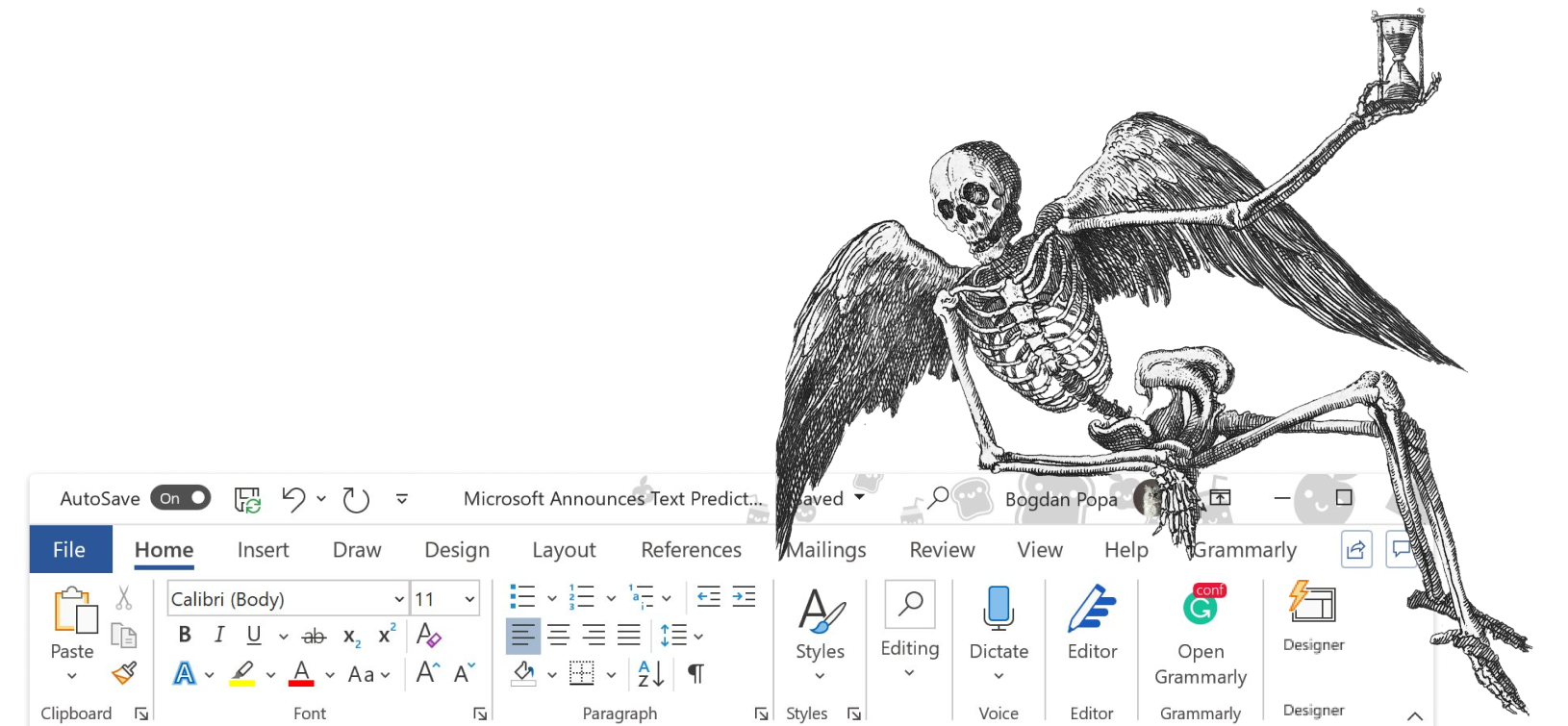It’s been two weeks since the launch of Writer for Mac, and it went off like a rocket. We sold almost 5,000 copies in two weeks. Of course, version 1.0 had some birth defects (1.01 is out now), but the feedback was overwhelmingly positive—with the exception of a few complaints, mostly about the absence of features and the price.
Now the only thing more difficult than creating a simple user interface is setting the price of your product…
1. Absence of Features
1.1 Creating More Efficient Interfaces
The more you think about how you use your writing tool, the less energy you have to think about your writing. Building an app with fewer features is much harder than adding a bunch of settings and letting the user decide. You may call bullshit on whoever is trying to convince you that “the absence of a feature is as a feature,” but however smart you are—you will have a hard time overthrowing Jef Raskin’s definition of the user interface:
The Interface is the way you accomplish tasks with a product, what you do and how it responds.
What follows from this rule is that efficient user interfaces obey the basic rule of an interaction economy: Minimal input (“what you do”) with maximal output (“how it responds”). The logical consequence is that the fewer manipulations required by an interface to achieve its goal, the better it works. This is why we tried to avoid mouse interaction in the drafting process as much as possible. (Mouse interaction is expensive due to its find-point-click model being less economical than keyboard interaction).
The downsides of trying to create a more efficient interface are that people will at first feel alienated, that it costs a lot to develop, and that its success is not guaranteed. With iA Writer we deliberately took that risk by:
- Stripping away many of the features of common text editors
- Introducing three new features: Auto-Markdown, Focus Mode, and the disappearing window bar
- Investing a lot of energy into details like cursor definition (it took us months to make that cursor work), typography, transitions, fades, and tiny shapes.
1.2 Development Time
The absence of features, the innovation in input definition, and the attention to detail are why it took us over a year to develop the software, from the information architecture (started in January 2010) to the implementation (October 2010), optimization (January 2011), and bug fixing (March). Almost everything in iA Writer is custom built.
“Custom built” is, as such, not a positive quality (in general, you should stick to the standards), but every deviation we took from UI standards was conscious and necessary. However, the risk you take when you deviate from UI standards is substantial:
- Users get confused and frustrated when learned interaction patterns don’t work
- Programs with custom-built elements require more computational power and are slower
- You have to deal with an angry army of bugs
- Deviating from common standards leads to higher development costs
If you want to innovate, you have no other choice but to forge a new path. Judging from the sales and ecstatic feedback, we did the right thing with iA Writer. We will very probably reach our sales objective within a month, and more importantly, iA Writer will make lots of writers happy.
2. Cost
2.1 Product Value (the Client’s Perspective)
In the eyes of the customer, the value of a product is not proportional to its production cost. A beef filet cooked for a long time by many cooks doesn’t necessarily taste better than a cheeseburger. The customer doesn’t care how long it took you to do something. What customers look at is exclusiveness and direct benefit to them. Or as Neven put it:
“Pay $20 if you think you’ll get $20 of use out of the app. That is the only meaningful criterion to use.”
If your offer is exceptional, your price can and should be. If you offer an exceptional product at a low price, it will be perceived and treated as a low-value product, no matter how amazing it is.
That the value of your product is also going to be perceived through its price is a fact. But this doesn’t mean that you should sell your text editor at $5,000 no matter what. You need to be realistic. You need to know what it is, and you need to compare it with the market value. But be careful with what and whom you compare:
You can’t compare the price of Pages with that of iA Writer directly because the two pricing strategies have vastly different goals.
Before deciding on the price, we looked at pretty much every writing app on the market and decided to position ourselves between the highest and lowest offers. There is considerably more expensive writing software out there; even in the category of so-called “minimalist writing applications,” we are not the most expensive.
We are in the upper region of that sector, though. Why? Because iA Writer is a beautiful, powerful, and efficient new product. It not only does the job, it feels fantastic to use. The vast majority of customers confirmed, “it’s worth every penny.” You need to earn your value, and you earn it by making people happy that they bought it.
From our perspective, it feels good that we don’t need to compete on price and can price our product at the level we think matches its value. Not everybody has that luxury, but the more apps are thrown out for the price of candy, the harder it gets to make good software. Therefore:
Let’s kill this meme that software priced lower than a large pizza is somehow “expensive,” and let’s not fall into the trap of comparing third-party apps to Apple apps based on price.”
A nice side effect: pricing iA Writer higher than the average makes it possible for our competitors to go up with their price. We want healthy competitors that fight on a higher level.
2.2 Production Cost
We figured that from the 80,000 people that bought and loved iA Writer for iPad, we could get at least 10,000 in the first three months to cover the initial development costs. Our goal is not to get rich, sail to Fiji, and drink cocktails on the beach. (well, maybe it is 😉 )
In the meantime there is nothing more exciting we can do for ourselves than investing in better working conditions, designing better products, and improving the quality of our work. All of our work.
2.3 Know How Benefit
iA Writer for iPad has given us highly valuable insights we can use to improve our client services—only a few other agencies have direct experience designing, making, and selling successful iPad apps. Switching perspectives and becoming our own client made us understand a client’s perspective much better, and this directly improved our service. In return, the client business has helped us understand how to create successful products.
Within our company, iA Writer is an independent entity. To secure it, we first need to guarantee the development costs are covered for the immediate future, so we can move forward with the project. Otherwise, we will shut it down. (We have no investors, and I’d like to keep it that way.)
Now, again, this is just the business side, and, again, as far as customer perception goes, this is still irrelevant to the product price. But it is our perspective and it is important as an economic base for iA Writer’s existence.
2.4 The Right Price
As mentioned above, from a customer perspective the relativity of price and the perceived value are intertwined. If we sell iA Writer for $10 we might sell double the amount (or even more), but the perceived value goes down.
So who cares, as long as we make more money with it, right? Wrong! If you sell a product at a low price, you’ll have to deal with more support questions. Not only are you less able to provide answers for products that cost $0.99 (you need to stay economically viable or go bankrupt), but customers will also see you as a desperate little shop and not as a serious software provider—which doesn’t make the discussion easier.
One thing I learned with the dynamic pricing experiment we did a couple of years ago is to be patient. If the price varies a lot and people are aware of price changes, then they will jump on it when it’s cheap and wait when it’s expensive. If you keep your price at a spot where it is affordable and fair (in relation to other comparable products) they will eventually buy it at a higher price. The main lesson from being in business for five years is: the right price for a product is the highest price you can ask for, but with one condition: that your customers remain happy after they buy it.
2.5 Why was Writer for iPad so cheap? iTunes vs. App Store
One problem with the different App Stores is that the rules change depending on the platform.
1. iPad: The best chance to get an iPad user to download your app is when he finds you on his iPad, that is: through iTunes. And the only way to be found in iTunes is to be featured in the top ten. And there are only two ways to stay in the top ten: by cheating (which is nasty and stupidly dangerous) or reducing the price. It’s that simple.
2. OSX: The chance that someone reads about your app when she’s on her desktop is statistically higher than being found with an iPad. With a desktop app there is some probability that you can lead people directly from the Website to the App Store. But beware, there is still the web-to-App Store gap. Having a strong presence in the store is not completely irrelevant.
If we could, we would price iA Writer for iPad closer to iA Writer for Mac. But alas, we need to be realistic and realism has forced our price down to the minimum $0.99 cents for quite some time. Here’s why:
- Desktops are work devices, iPads are leisure devices. Even though iA Writer for iPad is a professional’s tool, it is sold in an amateur environment at amateur prices.
- The highly competitive iTunes store (prices are generally lower on iPad, and even lower on iPhone) sets the tone.
- The impossibility to translate desktop and mobile attention into iPad sales forces you to compete on iTunes.
Having both iPad and OSX has allowed us to go up with the price because now there is traffic and sales synergy between the two.
Once we have an iPhone app in the market, we’ll be able to close the circle (at least for Mac users), and the price of the iPad might go up further. In any case, to really close the circle, we’ll have to release Writer for PC! But let’s first see how things develop on the Mac.
3. Test Version?
One reason why we went for the App Store is that Apple will handle all the transactions and updates and be a neutral middleman in case of a refund. With the expected sales we simply couldn’t manage everything through an open source e-commerce system.
Unfortunately, Apple doesn’t offer test versions. This has, so far, been our greatest challenge. Some claim that Writer for Mac is too expensive without trying it. All software that relies on as much interaction as a text editor cannot be judged without using it.
I was irritated when I read the first blog post of someone “evaluating” Writer for Mac at length and deciding it to be overpriced—without actually buying (and that is: using) it. To judge a bicycle you need to ride it! I now think that’s actually quite a funny post, since many critical of its price have overcome their initial resistance and decided to try it, and after trying it they regularly admit that “it’s worth every penny.” Of course, not everybody will be a fan. (But that’s understood.)
Now, as an old UXer and blogger, I know that if there is any form of user anger (there is a difference between customers and users: customers pay, users use), there is often a good chance for improvement, no matter how irritating the complaint might seem to be at first.
I know that what is missing is a test version. Since so many people converted from haters to lovers, confirming our own experience using the program, I’d really like to offer a test version. Or at least to give a test version a chance. But:
- iA Writer will only work if it is fully functional (functionally limited test versions are a no-go)
- We use a licensed font
- Our test version needs to be of the same quality as our software
- iA Writer has a small initial learning curve: If you buy the program, you’ll get over that in 30 seconds because you want to. If you just play with it, you might drop it 10 seconds too soon.
Since this is the first desktop app we’ve produced in house I will be very careful about how we approach this. I know that there are frameworks that can be used for this, but I want to test them thoroughly before throwing a test version on the market. In my experience, most test versions make me feel bad. Here are some of my (selfish, stupid) feelings when testing trial software (usually cheap rationalizations for not buying):
- “It’s very cool but I have it already; why do I need to buy it?”
- “I need this; they force me to buy it! I’m being held hostage!” (Adobe Syndrome)
- “How dare they just turn off the software running on my computer?”
- “What, only 4 days left? Oh you cheap bastards!” (!)
- “Yeah, I’ve got enough software on my computer. Now that I have it, I don’t need to try it.”
- “Ah, now I need to learn this interface. Dude! Maybe next time…”
- “Aren’t these free trial guys kind of desperate? I don’t support desperate people.”
etc. etc.
We want to release a test version where people are looking forward to buying it because they get something more without being limited in testing it. But how would such a trial work? We want to excel in the concept of a test version as we try to be a step ahead in creating every other aspect of our product. Right now, we don’t need to have a test version. But we want one because we know that many more will love Writer, once they try it. It’ll be only a matter of time until we figure out how to do this properly.
4. Next Updates
We just released 1.0.1, addressing the main bugs and uncool 1.0 limitations. Writer for Mac now has:
- Auto-Markdown shortcuts for Cmd-B and Cmd-I
- HTML export
- Word & character counts plus Reading Time in fullscreen
- Open and save using different file formats (.mkd, .text, etc.)
- Bug fixes for full screen, the title bar, printing, a.o.
There are still a couple of issues that we couldn’t address in the 2 week time span, but more updates will come soon. Future versions will include text zoom +/-, more languages, QuickCursor compatibility, better file handling, curly quotes, remembered spelling settings, window size, and some very cool stuff that I don’t want to talk about just yet.








